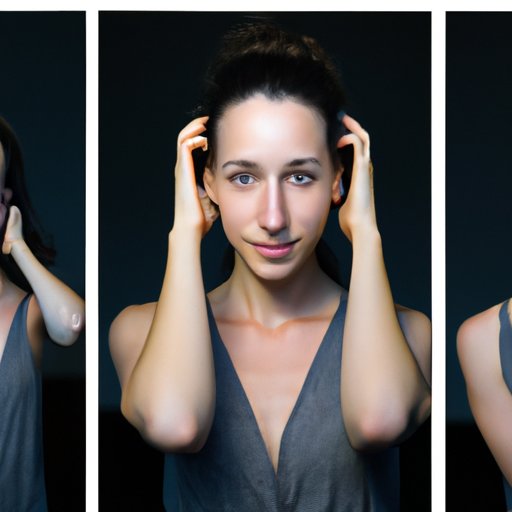Introduction
Portrait photography is a type of photography that focuses on capturing people in their natural environment or posed in a studio setting. The goal of portrait photography is to capture the personality of the subject while creating a unique image. It’s an art form that requires skill and creativity to produce beautiful, timeless photos that tell a story.
A good portrait photographer will take the time to understand their subject and the environment they are in. They must also be knowledgeable about the equipment they use, including cameras, lenses, lighting, and props. By understanding the fundamentals of portrait photography and mastering the techniques, photographers can create stunning images that will stand the test of time.
A Comprehensive Guide to Portrait Photography: Tips, Techniques, and Equipment
Whether you’re a beginner or a professional photographer, there are a few key elements to consider when it comes to portrait photography. From choosing the right camera and lens to learning the basics of composition and mastering exposure and color balance, here’s a comprehensive guide to help you get started.
Types of Cameras Used for Portrait Photography
When it comes to portrait photography, the type of camera you use will depend on your budget and experience level. Digital SLR (single-lens reflex) cameras are the most popular choice among professionals, as they offer more control over settings and produce high-quality images. However, if you’re just starting out, a mirrorless camera is a great option as it offers similar features at a more affordable price. Compact point-and-shoot cameras are also an option, although they typically don’t offer the same level of control or image quality.
Choosing the Right Lens for the Job
The next step is selecting the right lens for your camera. When shooting portraits, a wide-angle lens is ideal for capturing a full-length shot of the subject. For headshots and close-ups, a telephoto lens is best as it allows you to capture more detail. If you’re using a digital SLR, you may also want to invest in a prime lens, which has a fixed focal length and produces sharper images.
Lighting Tips for Professional-Looking Shots
Lighting is key when it comes to portrait photography. Natural light is often the best option, as it produces soft, even illumination. However, if you’re shooting indoors, you may need to use artificial light sources such as flash units or studio lights. Be sure to experiment with different lighting setups to find the best look for your shot.
Using Props and Backgrounds for a Unique Look
Props and backgrounds can add depth and interest to your portrait photographs. Experiment with different textures, colors, and patterns to create a unique look. You can also use props to help your subjects feel more relaxed and comfortable.
Exploring the Art of Portrait Photography: How to Capture the Perfect Moment
Once you have the basics down, it’s time to explore the art of portrait photography. Learning the fundamentals of composition and mastering the techniques of capturing emotion, movement, and action will help you create professional-looking shots.
Learning the Basics of Composition
Composition is one of the most important aspects of portrait photography. Understanding the principles of composition—such as the rule of thirds and leading lines—will help you create dynamic, eye-catching images. Additionally, pay attention to how you position your subject in the frame. Placing them off-center can create a more interesting shot.
Capturing Emotion in Your Shots
It’s also important to capture the emotion of your subject in your portraits. This can be done by having them move naturally or by asking them to make certain expressions. Use your body language to connect with your subject and build trust.
Timing is Everything: Capturing Movement and Action
Timing is essential when it comes to capturing movement and action in your portrait photographs. Pay attention to the timing of your shots and adjust the shutter speed accordingly. A slower shutter speed will give you more time to capture the perfect moment, while a faster shutter speed will freeze the action.
From Selfies to Professional Shots: A Beginner’s Guide to Portrait Photography
If you’re just starting out, you’ll need to learn the basics of portrait photography. From getting comfortable with your camera settings to finding inspiration from other photographers, here are a few tips to help you get started.
Getting Started with Camera Settings
Before you start shooting, familiarize yourself with the settings on your camera. Make sure you understand the basics of aperture, shutter speed, and ISO and how they affect the exposure of your photos. Take some time to practice and experiment with different settings until you get comfortable.
Finding Inspiration from Other Photographers
Take the time to study the work of other portrait photographers. Look at how they compose their shots, the lighting they use, and the poses they choose. This will help you develop your own style and gain insight into the techniques used by professionals.
Taking Advantage of Natural Light
Natural light is one of the most important elements of portrait photography. Whenever possible, take advantage of available light sources such as windows, doors, and skylights. This will help you create soft, even illumination and achieve the desired look.

Capturing Personality: An Introduction to Portrait Photography
When it comes to portrait photography, the goal is to capture the personality of the subject. Here are a few tips to help you create stunning shots that truly capture the essence of your subject.
Tips for Interacting with Subjects
Interacting with your subjects is an important part of portrait photography. Take the time to get to know your subject before you start shooting. Ask questions, listen to their stories, and show genuine interest in who they are. This will help you build a connection and create a more intimate atmosphere.
Making Subjects Feel at Ease
Making your subjects feel comfortable and relaxed is essential for capturing great portraits. Try to create a warm, inviting atmosphere and encourage conversation. Don’t be afraid to crack a few jokes or play some music to help break the ice.
Establishing Rapport With Your Subjects
Establishing a rapport with your subjects is key for capturing genuine emotion in your photos. Talk to them about their interests and passions and get to know what makes them unique. This will help you capture their true personality in your shots.

Mastering the Fundamentals of Portrait Photography: Expert Advice for New Photographers
Once you’ve mastered the basics of portrait photography, you can start to explore more advanced techniques. Understanding exposure and color balance, utilizing different focal lengths, and working with shutter speed and ISO will help you create stunning shots.
Understanding Exposure and Color Balance
Exposure and color balance are two of the most important elements of portrait photography. Learn how to adjust your camera settings to achieve the desired look. Pay attention to the background and foreground to ensure everything is well lit and balanced.
Utilizing Different Focal Lengths
Experiment with different focal lengths to create interesting shots. Wide-angle lenses are great for capturing a full-length shot, while telephoto lenses are ideal for headshots and close-ups. Using a prime lens can also help you achieve sharp, detailed images.
Working with Shutter Speed and ISO
Shutter speed and ISO play an important role in portrait photography. A slower shutter speed will give you more time to capture the perfect moment, while a higher ISO will help you capture more light. Experiment with both settings to find the right balance.
Conclusion
Portrait photography is an art form that requires skill and creativity to produce beautiful, timeless photos. From choosing the right camera and lens to mastering exposure and color balance, there are many elements to consider when it comes to portrait photography. By taking the time to understand the fundamentals and mastering the techniques, photographers can create stunning images that will stand the test of time.
(Note: Is this article not meeting your expectations? Do you have knowledge or insights to share? Unlock new opportunities and expand your reach by joining our authors team. Click Registration to join us and share your expertise with our readers.)
